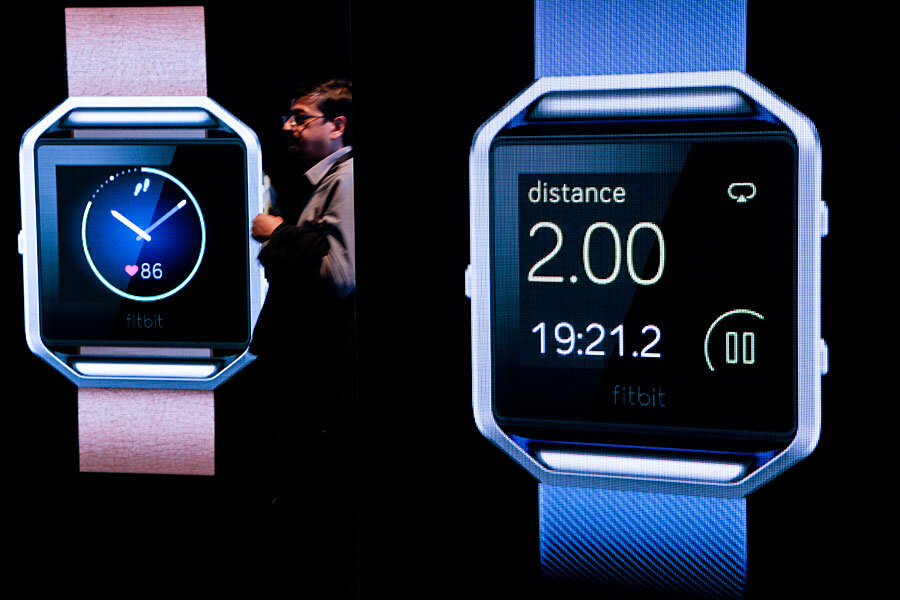Has Fitbit crossed the border to the fashion world with latest design?
Loading...
Fitbit released its newest fitness tracker, called the Fitbit Alta, on Wednesday. The new wearable fitness device could be the leading edge of a technology trend that blurs the lines between form and function.
When Fitbit was founded in 2007, its devices were very simple. The first Fitbit technology featured a wooden box and a circuit board, instead of the sleek colored band that characterizes the wearable fitness monitor today.
Now, Fitbit has gone the extra mile. The company’s newest release is not only inoffensive to the eye, but could also be considered downright fashionable.
Unlike some of the device’s older models, the new Fitbit does not have a elastomer (or rubber) wristband. Instead, it features a stainless steel or leather band that comes in a variety of colors.
The Alta also features a touchscreen, and can sync to smartphones. Like some of the company’s other trackers, the Alta tracks exercise and sleep patterns. In terms of functionality, Alta is very similar to other Fitbit devices.
The company has gone to some lengths in recent months to convince customers of the device’s utility, while meandering ever closer to the fashion world.
In January, Fitbit released the Fitbit Blaze, one of its more expensive trackers with a resemblance to the Apple Watch. The Blaze has a clock face and interchangable bands. After years of functional designs, the Blaze was one of Fitbit’s first nods to fashion.
“One of the first things we learned in this industry is that fitness is personal,” said Fitbit CEO James Park in a press release, “and if something isn’t your style, you won’t wear it.”
At the Consumer Electronics Show (CES) in January, former NFL player Tony Gonzalez extolled the versatility of the Blaze. Mr. Gonzalez, who now works for Fitbit, claimed that the company’s new product could easily transition “from the practice field to the red carpet.”
With Alta’s release following quickly on the heels of the Blaze, Fitbit appears to be chasing the fashion trend. Other wearable fitness tracker manufacturers have also noticed the wind changing.
Early this year, Misfit released its Ray fitness band. Like Fitbit’s Alta device, the Ray is sleeker and shinier than its older siblings. The tracker can also be removed from its band, allowing it to be worn as a necklace or otherwise personalized.
Fitbit refuses to be left behind as fitness trackers become more personalized. The company has had a longstanding partnership with the fashion designer Tory Burch.
Priced at $129, the Fitbit Alta is not the most expensive product in Fitbit’s arsenal. The larger Fitbit Surge and the Fitbit Blaze are both more expensive than the sleeker, more attractive Alta.
Given the device’s popularity, it is surprising that Fitbit stock has dropped over the last year. The company’s IPO did astoundingly well, with stocks selling for approximately $32 per share. Wednesday, the stock is worth just under half that amount at $15.91 per share.
Fitbit still controls 79 percent of the fitness tracker market. President Obama wears a fitbit. Perhaps the sleek and shiny Alta will spread the trend to more fashion forward figures.







